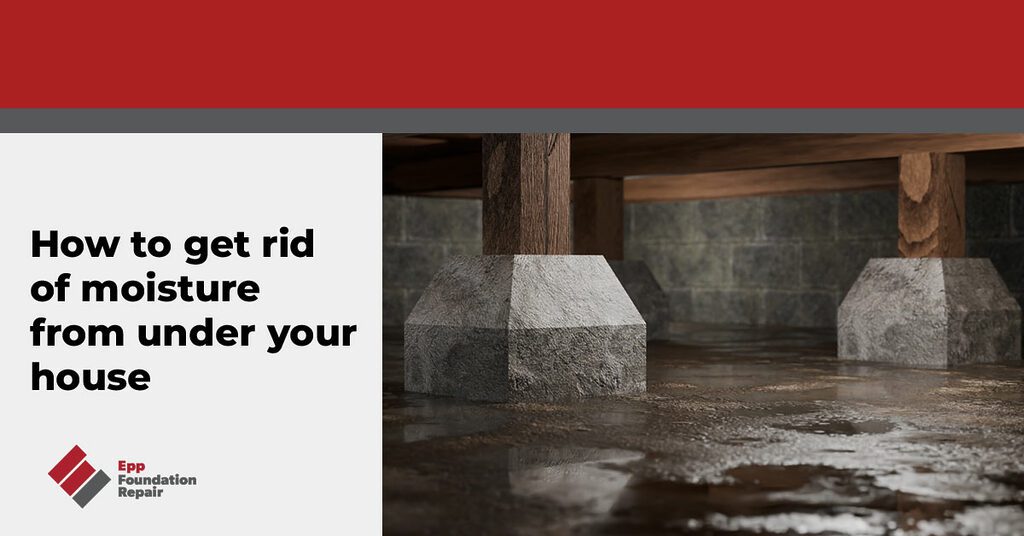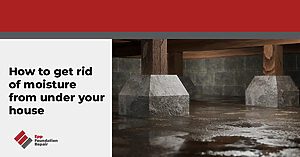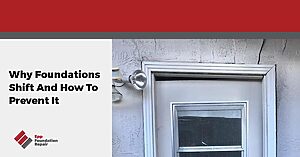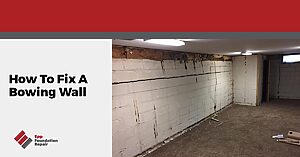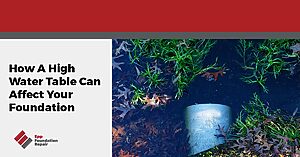The area beneath your house, known as the crawl space, often goes unnoticed and neglected. However, it plays a crucial role in the overall health of your home. Moisture accumulation in this area can lead to significant problems, including structural damage and health issues. If you’re a homeowner dealing with a wet crawl space, this guide will provide the essential steps to permanently eliminate moisture and maintain a dry and healthy home environment.
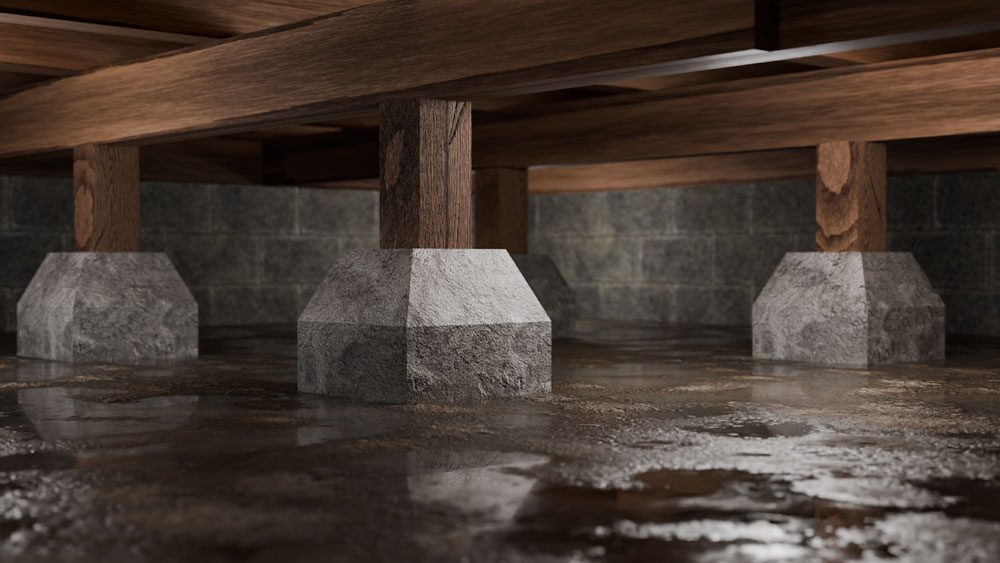
Why You Shouldn’t Ignore a Wet Crawl Space
Ignoring moisture in your crawl space can have dire consequences. Here is why it is essential to address the issue promptly:
- Structural Damage: Constant exposure to moisture can weaken wooden beams and supports, leading to sagging floors and costly repairs.
- Mold Growth: Damp environments are breeding grounds for mold and mildew, which can cause respiratory and other health problems.
- Pest Infestation: Insects and rodents are attracted to moist areas, increasing the risk of infestations.
- Reduced Indoor Air Quality: Moisture and mold in the crawl space can affect the air quality inside your home, leading to musty odors and potential health hazards.
- Elevated Radon Levels: Moisture in the crawl space can exacerbate the presence of radon gas, a colorless and odorless radioactive gas that seeps into homes from the soil.
- Decreased Energy Efficiency: Moisture increases humidity and makes your insulation materials less effective, forcing your heating and cooling systems to work harder to maintain a comfortable indoor climate. This extra load can result in higher energy bills and unnecessary wear and tear on your HVAC system.
Signs of Moisture Under the House
Identifying moisture in your crawl space is the first step toward addressing the issue. Remember that moisture encompasses all forms of water, not just visible pooling or flooding. Even elevated humidity levels can harm your crawl space. If you notice any of the following signs, it is time to take action to eliminate the moisture under your home:
- Musty Odors: Persistent musty smells in your home or crawl space can indicate mold or mildew growth.
- Condensation: Water droplets on pipes, walls, or floors in the crawl space or your home suggests high humidity levels.
- Wood Rot: Decaying wooden structures indicate prolonged moisture exposure.
- Rust: Metal components such as pipes, supports, or vents displaying rust or corrosion signal a persistent moisture problem that needs immediate attention.
- Warped Floors: If your floors are buckling, warping, or becoming uneven, this could indicate excessive moisture in the crawl space, causing the wooden flooring above to swell and distort.
- Increased Pest Activity: A sudden influx of pests may indicate a damp crawl space.
- Visible Mold: Mold growth on surfaces within the crawl space is a telltale sign of excess moisture.
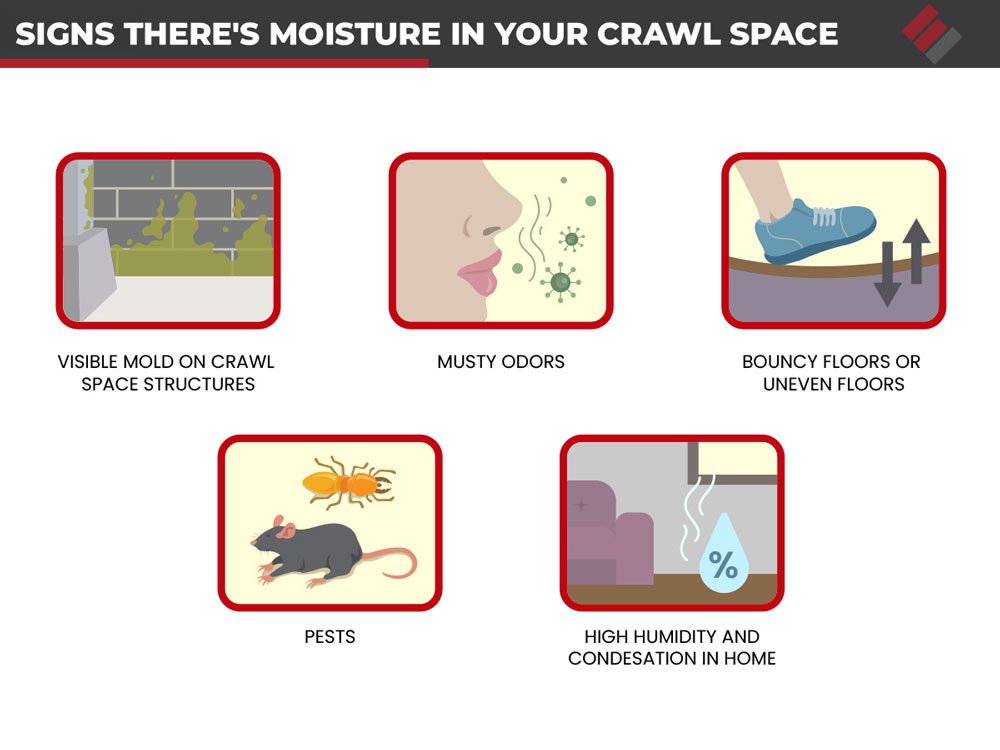
Knowing these signs can help you quickly identify and address issues before they escalate. With timely intervention, you can prevent severe damage to your home and ensure a healthier living environment.
How Does Water Enter the Crawl Space?
Understanding how water infiltrates your crawl space can help you prevent future problems. Common ways water can enter include:
- Poor Drainage: Ineffective drainage systems or a poorly graded yard can lead to water pooling near the foundation.
- High Water Table: Areas with a naturally high water table are prone to moisture issues in crawl spaces.
- Plumbing Problem: Broken or leaking pipes within or near the crawl space can increase moisture levels.
- Flooding: Heavy rainfall can lead to surface water flooding, which may seep into the crawl space if the soil around the foundation cannot adequately absorb or divert the excess water.
- Below-Grade Issues: If the crawl space is below grade, meaning it is located below the soil surrounding your home, it is more susceptible to water intrusion from the surrounding soil, especially in areas with poor soil drainage or during periods of heavy rain.
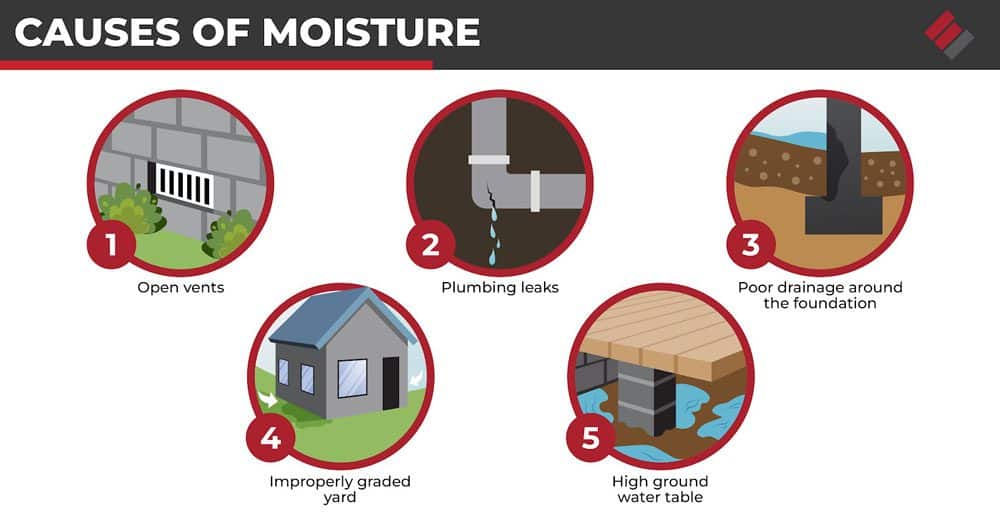
Fortunately, there are proactive steps you can take to safeguard your home against moisture infiltration. Let’s explore them now.
8 Steps to Permanently Get Rid of Moisture in Your Crawl Space
1. Inspection
Conduct a thorough inspection of your crawl space to assess the extent of the moisture problem. Look for signs of water entry, staining, standing water, mold growth, and structural damage. Call an expert for a more thorough investigation if you notice any such signs.
2. Remove Standing Water
Use a wet/dry vacuum or a sump pump to remove standing water from the crawl space. This immediate action will prevent further damage and mold growth.
3. Clean the Crawl Space
Once the standing water is removed, clean the crawl space to eliminate any existing mold, mildew, or debris. Use appropriate cleaning solutions and protective gear to ensure safety.
4. Install a Drainage System with a Sump Pump
Install a drainage system with a sump pump to effectively remove moisture from the soil surrounding your home. This system collects and removes water, keeping the crawl space dry even during heavy rains. One of the most effective drainage systems is a drain tile system.
5. Encapsulate
Encapsulation involves sealing the crawl space with a vapor barrier and sealing all vents to prevent moisture from entering. This barrier covers the floors, walls, and sometimes the ceiling of the crawl space, creating a controlled environment.
6. Consider Insulation
Adding insulation to your crawl space can help regulate temperature and reduce humidity. Insulation also provides an extra layer of protection against moisture infiltration.
7. Install a Dehumidifier
Once encapsulated, a dehumidifier maintains optimal humidity levels, preventing mold growth and structural damage. Without encapsulation, the dehumidifier would overwork, attempting to circulate outside air, diminishing its effectiveness and potentially leading to higher energy consumption.
8. Reduce Moisture in the Soil
- Clean Gutters: Regularly clean and maintain your gutters to prevent water overflow and pooling near the foundation.
- Install Downspout Extensions: Extend downspouts to direct water away from the foundation, reducing the risk of seepage.
- Regrade Yard: Ensure the yard slopes away from the house to facilitate proper drainage and prevent water accumulation near the foundation.
- Careful Landscaping: Avoid planting trees and shrubs near the foundation to prevent overwatering or root damage. Such plants can be placed further in the yard to absorb excess water during heavy rains and prevent the water from reaching the crawl space.
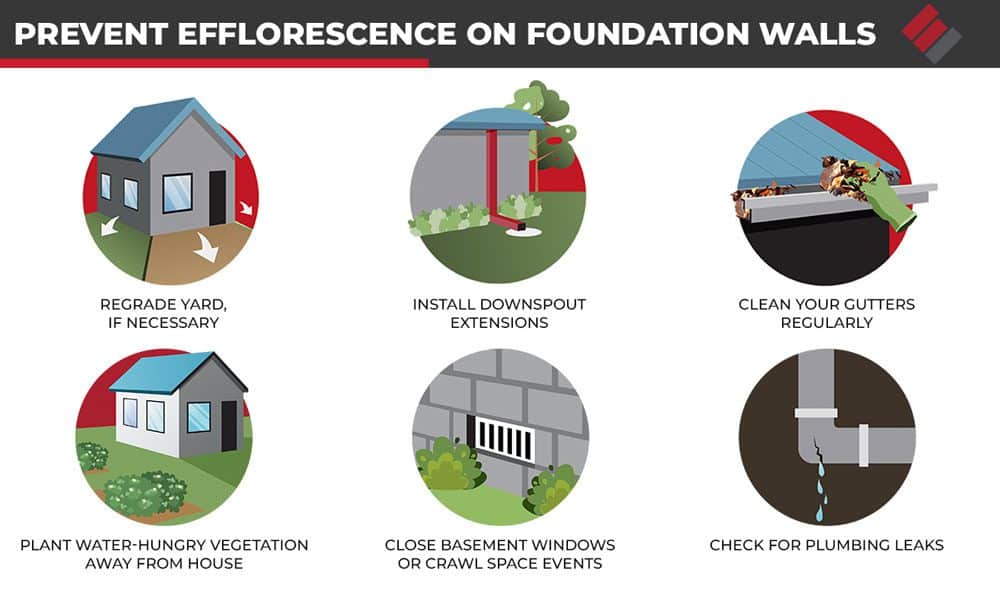
Why Should You Hire a Professional to Encapsulate Your Crawl Space?
While some homeowners may attempt DIY encapsulation, hiring a professional ensures the job is done correctly and efficiently. Without professional cleaning, materials, and installation, gaps or weak points in the vapor barrier can emerge, allowing moisture to seep through. Moisture trapped behind these barriers creates an ideal environment for mold to thrive.
Inadequate encapsulation fails to address existing moisture problems and may inadvertently exacerbate them, leading to extensive structural damage and health hazards over time.
Professionals have the tools and expertise to seal your crawl space and address any underlying issues effectively. Additionally, professional encapsulation can provide long-term warranties, giving you peace of mind that your crawl space will remain dry and protected.
Don’t let moisture in your crawl space compromise your home’s integrity and your family’s health. Schedule an inspection and get a professional encapsulation quote from Epp Concrete today. Our team of experts will help you create a dry, healthy, and comfortable home environment. We service Nebraska and parts of Iowa, Missouri, and Kansas.

